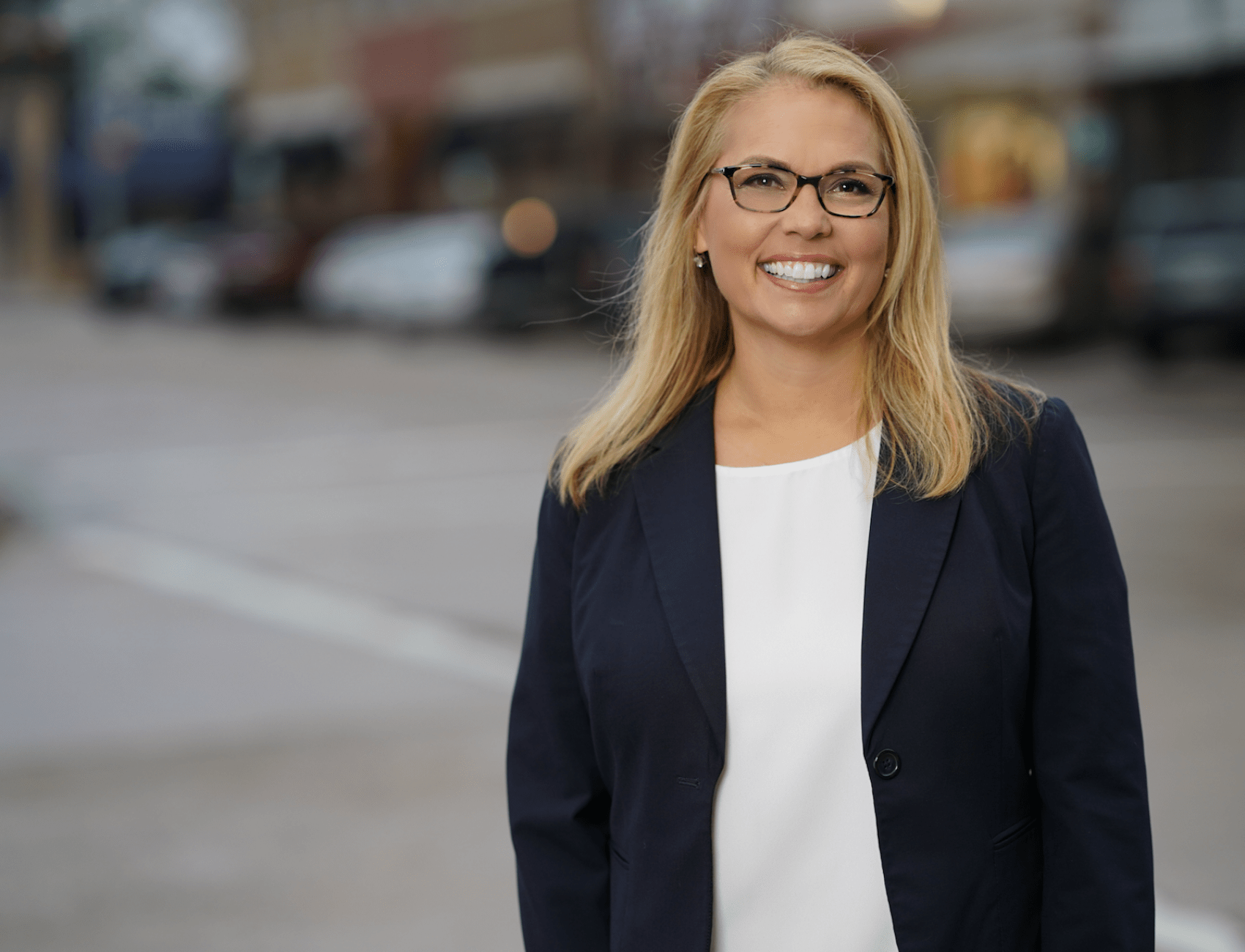Democratic Candidate Brandy Chambers Wants to Help Turn the Texas House Blue
If Chambers can unseat the Republican incumbent in her district, she said she’ll prioritize expanding Medicaid, improving public education funding, and lowering property taxes.

Brandy Chambers is one of the handful of Democratic candidates who could help flip the Texas House of Representatives if they win their highly competitive races next week. To Chambers, a victory next week would mean she could make progress on the issues she believes Texans care about—expanding Medicaid, improving public education funding, and lowering property taxes—rather than the fringe issues she says Republican lawmakers have focused on.
Chambers said she became disheartened when “the extreme right wing was setting the agenda for Texas.”
“After Trump won, the Texas legislature followed in his footsteps,” she explained, “prioritizing things like the bathroom bill [a bill prohibiting transgender people from using public restrooms that match their gender identity], the ‘show me your papers’ law, while migrant children are dying in custody, our state’s public education system is failing, and those weren’t priorities for some reason.”
Chambers, an employment attorney, said she was inspired to run for office in her district when she noticed that Democrats often were simply not running candidates in races across Texas. In her district, which includes parts of Dallas County, Richardson, and Garland, the Republican incumbent, Angie Chen Button, was elected in 2008 and ran without a Democrat opposing her in the next three elections. Then, in 2016, a Democrat did run—with very little funding for his campaign—and still got nearly 43 percent of the vote.
“That’s when it clicked to me,” Chambers said. “It’s not necessarily that Texas or my district is so red. It might just be red out of default. And I thought, if a man with no resources could get 43 percent of the vote, I wonder what a candidate with resources, with a message, with qualifications could do.”
So Chambers ran to represent District 112 in 2018. She got 49 percent of the vote and lost to Button by just 1,110 votes. Now Chambers is back—with a lot more money. After she came within such a narrow margin of defeating Button, Republicans and Democrats alike have poured money into the respective campaigns. Both Chambers and her opponent have raised over $1 million each.
Democrats could flip the Texas House of Representatives for the first time in almost two decades next week. About 30 seats are seen as competitive, including the seat Chambers is vying for. To take the state House, Democrats would need to pick up nine seats and defend all of their own, including the 12 they picked up in 2018.
If Democrats win the House, the GOP stronghold on the Texas state government would end. Their win would put a dramatic stop to conservatives’ ability to push their preferred policies on prominent matters like abortion rights and energy policy, and it would give Democrats a seat at the redistricting table. Texas has the second-largest congressional delegation in the country, and next year, the state’s U.S. House seats—and the Texas Senate and Texas House of Representatives—will all be redistricted. If the Republican Party can keep control of the state House, it will be able to draw districts that improve chances of keeping control of the state legislature and increase the likelihood of retaking control of the U.S. House.
If Chambers wins next week, her top priorities for the upcoming session are expanding Medicaid, fully funding public education, and lowering property taxes.
“We are the highest uninsured state in the nation, and that was pre-COVID,” Chambers said. “If we expand Medicaid, we can provide healthcare coverage to over one million Texans.” The Houston Chronicle recently reported that a study from Texas A&M found that expanding Medicaid in Texas could “bring as much as $5.4 billion federal dollars into the state and enroll nearly 1 million more people in the federal safety-net insurance program.”
The average person in her district, Chambers said, doesn’t have access to affordable healthcare. Her opponent, Button, has voted against Medicaid expansion in the past, but has changed her position during this race. Button did not respond to a request for comment.
To Chambers, fully funding Texas’s public education system means restructuring the way it is funded to make it more efficient.
“We have a system called recapture—the ‘Robin Hood’ program,” Chambers said. “It requires that a property-rich district gives its excess back to the state, then distributes it to the property-poor districts.” Chambers called recapture “a great concept,” but said it has enabled the state to spend less dollars on education by increasing taxpayer burden.
Chambers sees charter schools as another problem with school funding in Texas. While charter schools are almost 100 percent funded by state revenue, public schools receive just one-third of their funding from the state. “So essentially, we’ve created private schools and fully funded them by the state, while still having other schools basically drowning.”
To address those two issues, Chambers wants to require recapture money to go back into the public education budget and not be spent on charter schools. She also said she wants to have a taxing authority on charter schools. “The bottom line is Texas cannot afford two different school systems.”
